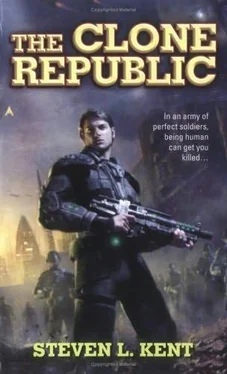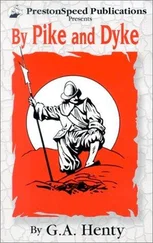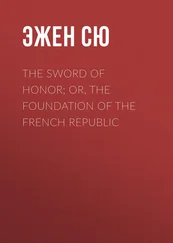Steven Kent - The Clone Republic
Здесь есть возможность читать онлайн «Steven Kent - The Clone Republic» весь текст электронной книги совершенно бесплатно (целиком полную версию без сокращений). В некоторых случаях можно слушать аудио, скачать через торрент в формате fb2 и присутствует краткое содержание. Жанр: Боевая фантастика, на английском языке. Описание произведения, (предисловие) а так же отзывы посетителей доступны на портале библиотеки ЛибКат.
- Название:The Clone Republic
- Автор:
- Жанр:
- Год:неизвестен
- ISBN:нет данных
- Рейтинг книги:5 / 5. Голосов: 1
-
Избранное:Добавить в избранное
- Отзывы:
-
Ваша оценка:
- 100
- 1
- 2
- 3
- 4
- 5
The Clone Republic: краткое содержание, описание и аннотация
Предлагаем к чтению аннотацию, описание, краткое содержание или предисловие (зависит от того, что написал сам автор книги «The Clone Republic»). Если вы не нашли необходимую информацию о книге — напишите в комментариях, мы постараемся отыскать её.
The Clone Republic — читать онлайн бесплатно полную книгу (весь текст) целиком
Ниже представлен текст книги, разбитый по страницам. Система сохранения места последней прочитанной страницы, позволяет с удобством читать онлайн бесплатно книгу «The Clone Republic», без необходимости каждый раз заново искать на чём Вы остановились. Поставьте закладку, и сможете в любой момент перейти на страницу, на которой закончили чтение.
Интервал:
Закладка:
“And there’s something else,” I said, moving toward Shannon so that no one else would hear me. “He’s out-born.”
I expected Shannon to spit out his beer, but he didn’t. He stood frozen for a moment, then swallowed. “No shit?” he said. “Born off Earth? That little speck-sucker must really know his stuff.”
CHAPTER FOURTEEN
The Kamehameha sat listless, while the frigates and fighters that surrounded her remained in constant motion. Nearly a dozen frigates orbited her hull, circling it in odd patterns. They would keep the flagship safe from fighter attacks. Of course, any fighter carrier, even an ancient one like the Kamehameha, had strong shields and powerful cannons.
The Inner and Central Scutum-Crux Fleets hovered along opposite hemispheres of Terraneau. For a moment, the two fleets looked like mirror reflections of each other; then the Central Fleet pulled back from the planet and arrayed itself in battle formation with six carriers launching fighters and six carriers in reserve. Harriers and Tomcats poured out of six carriers at the front of the formation like angry hornets defending their nest. The Harriers moved so quickly that they could not be tracked with the human eye.
Admiral Klyber, commander of the Central Fleet, attacked first. A wave of his Tomcats, fighters made for nonatmospheric conditions with particularly powerful missiles and particle-beam cannons, vanished from radar. When they reappeared, they were approaching the al-Sadat, the flagship fighter carrier of the Inner SC Fleet.
I watched the virtual representation of the battle in real time on a three-dimensional holographic display. Floating in midair, the display looked like a glowing green grid with models of ships. Five meters long and three meters deep, it was large enough to show every detail of the battle.
“Man, that’s fierce,” Lee whispered to me.
“Shhh,” I hissed. Everyone else in the room was silent.
Klyber’s attack made perfect sense. The al-Sadat sat isolated from the other capital ships in the Inner SC Fleet. The nearest frigates were hundreds of miles away and headed in the wrong direction—toward what would likely become the front line of the battle. Klyber’s fighters skirted that line, flanking Robert Thurston’s formation and attacking an unguarded pocket near the rear. It would take a couple of minutes for Thurston’s closest carrier to arrive on the scene.
Thurston commanded his forces from a simulated bridge in one corner of the auditorium. I had a good view of him from my seat.
“Shields,” Thurston said, in a voice that seemed far too calm considering the situation.
“Should we take evasive action, sir?” a crewman asked.
“That will not be necessary,” Thurston said as he paced the deck.
“Shall I signal for frigate support?” the crewman asked.
Admiral Thurston did not have the tactical advantage of watching the battle on a three-dimensional display. From my omniscient seat, I could see every aspect of the battle. I knew that Klyber had already launched a second wave of fighters. Thurston, with nothing more than a battle map that displayed in-ship radar readings, could not know what a forceful assault Admiral Klyber had planned.
“He’s sunk. Klyber’s going to end this fast,” Lee whispered.
“Shhhhh!” I hissed. A few of the people sitting near us gave Lee and me some chilly glares.
On the other side of the room, where the officers sat, a loud cheer erupted. They wanted blood. “Bet the boy never saw anything like this at the Academy,” one overexcited officer blurted in a voice that carried. With that, the officers became silent.
I glanced back at the 3-D display to see what all the cheering was about, but I was more interested in watching Admiral Thurston. He looked too young to command a ship. With his spiky, rust red hair and pimples, he looked like a teenage boy pretending to stand at the helm.
“A very aggressive attack,” Thurston said, cocking a single eyebrow. “Either he intends to win early or he wishes to back us into a…”
I looked back at the full-battle display in the center of the auditorium. Klyber’s fighters were closing in on the al-Sadat . Thurston showed amazing patience for a man whose ship was about to be attacked by 140 armed fighters. Warning lights flared along the ceiling and floor of the mock bridge. The sirens near the helm console blared so loudly that they choked my thoughts.
I doubted Thurston’s grasp of the situation. Just behind that initial wave of fighters, half of the Central SC Fleet was in position for the second wave of the attack. Klyber had an unfair advantage—the Kamehameha, a thirteenth fighter carrier. She might have been old and small by carrier standards, but the Kamehameha still bore a complement of sixty fighter craft.
“Send the Washington and the Grant to sector 14-L. Tell them to launch fighters on my orders and power up shields on my mark,” Thurston said as he studied his battle map.
“Sir, we are undefended,” the crewman said.
“Prepare our pilots,” Thurston said in a voice that made the order sound like a compromise, “but do not give the order to launch.”
“Enemy fighters’ ETA is less than one minute,” another crewman yelled.
“What the hell is he doing?” Lee asked.
“Tell the captains of the Washington and the Grant to launch fighters…now!” Thurston’s voice was emphatic. He looked so much like a boy in puberty that I expected his voice to crack, but he remained very much in control.
Two events happened simultaneously. Klyber’s fighters arrived and commenced a meaningless attack. His Tomcats buzzed around the hull of the al-Sadat, but their pilots seemed uncommitted. Instead of firing missiles, they seemed more interested in flying defensive patterns. As they circled, the gun batteries lining the hull of the al-Sadat flashed green.
At the exact same moment, a much more important event took place on a distant part of the map. The Washington and the Grant launched fighters as two of Klyber’s carriers and a complement of frigates entered the sector.
“Order the fighters in sector 14-L to attack the enemy carriers,” Thurston said. “Have the Harriers concentrate their fire on their shield stations. The Tomcats can pick off any fighters they manage to launch.”
“Yes, sir,” the crewman said, a new note of excitement evident in his voice.
“Instruct the captains of the Washington and the Grant to attack the frigate escort. We can’t allow those frigates to sneak up on our fighters.”
“Yes, sir,” the crewman responded.
Unlike the al-Sadat, which had its shields up, the carriers from the Central SC Fleet had lowered their shields so that they could launch their fighters. Thurston’s Harriers fired missiles at the shield antennae on those carriers, quickly obliterating their best defense.
I watched as the tiny fighters moved in on the carriers like a swarm of ants. Their missiles would do little good against shielded carriers, but Thurston had timed the attack precisely right. Red lights appeared along the edges of the Central Fleet ships showing that their shield stations were destroyed. Having destroyed the shield antennae, Thurston’s fighters suddenly became a serious threat.
Not far away, Admiral Klyber’s frigates were completely mismatched against Thurston’s carriers. In less than two minutes, the Washington destroyed five Central Fleet frigates and the Grant annihilated three more. Any frigates that survived this attack would limp away from the fight. Somehow Robert Thurston had peered into Klyber’s mind and uncovered a weakness. The bulk of the Central Fleet’s frigates fled back toward the protection of the fleet; but the Inner Fleet’s Harriers and Tomcats continued to pummel the carriers, cutting off any hope of escape.
Читать дальшеИнтервал:
Закладка:
Похожие книги на «The Clone Republic»
Представляем Вашему вниманию похожие книги на «The Clone Republic» списком для выбора. Мы отобрали схожую по названию и смыслу литературу в надежде предоставить читателям больше вариантов отыскать новые, интересные, ещё непрочитанные произведения.
Обсуждение, отзывы о книге «The Clone Republic» и просто собственные мнения читателей. Оставьте ваши комментарии, напишите, что Вы думаете о произведении, его смысле или главных героях. Укажите что конкретно понравилось, а что нет, и почему Вы так считаете.












